1. Mayans L. Metabolic syndrome: insulin resistance and prediabetes. FP Essent. 2015; 435:11–16. PMID:
26280340.
2. Huh JH, Ahn SG, Kim YI, Go T, Sung KC, Choi JH, Koh KK, Kim JY. Impact of longitudinal changes in metabolic syndrome status over 2 years on 10-year incident diabetes mellitus. Diabetes Metab J. 2019; 43:530–538. PMID:
30877706.

3. Graf BL, Raskin I, Cefalu WT, Ribnicky DM. Plant-derived therapeutics for the treatment of metabolic syndrome. Curr Opin Investig Drugs. 2010; 11:1107–1115.
4. Marles RJ, Farnsworth NR. Antidiabetic plants and their active constituents. Phytomedicine. 1995; 2:137–189. PMID:
23196156.

5. Sultana S, Asif HM. Review: Medicinal plants combating against hypertension: a green antihypertensive approach. Pak J Pharm Sci. 2017; 30:2311–2319. PMID:
29175804.
6. Cabral CE, Klein MR. Phytosterols in the treatment of hypercholesterolemia and prevention of cardiovascular diseases. Arq Bras Cardiol. 2017; 109:475–482. PMID:
29267628.

7. Park BY, Min BS, Oh SR, Kim JH, Kim TJ, Kim DH, Bae KH, Lee HK. Isolation and anticomplement activity of compounds from
Dendropanax morbifera
. J Ethnopharmacol. 2004; 90:403–408. PMID:
15013208.
8. Bae K, editor. The Medicinal Plants of Korea. Seoul: Kyo-Hak Publishing;2000.
9. Hyun TK, Ko YJ, Kim EH, Chung IM, Kim JS. Anti-inflammatory activity and phenolic composition of Dendropanax morbifera leaf extracts. Ind Crops Prod. 2015; 74:263–270.
10. Moon HI. Antidiabetic effects of dendropanoxide from leaves of
Dendropanax morbifera Leveille in normal and streptozotocin-induced diabetic rats. Hum Exp Toxicol. 2011; 30:870–875. PMID:
20716587.
11. Kang MJ, Kwon EB, Ryu HW, Lee S, Lee JW, Kim DY, Lee MK, Oh SR, Lee HS, Lee SU, et al. Polyacetylene from
Dendropanax morbifera alleviates diet-induced obesity and hepatic steatosis by activating AMPK signaling pathway. Front Pharmacol. 2018; 9:537. PMID:
29875667.

12. Chung IM, Kim MY, Park WH, Moon HI. Antiatherogenic activity of
Dendropanax morbifera essential oil in rats. Pharmazie. 2009; 64:547–549. PMID:
19746846.
13. Jo YB, Lee JH. A study on the effect of the Dendropanax mobifera extract on anti-hypertensive. J Korea Acad Ind Coop Soc. 2016; 17:708–715.
14. Yang HY, Kim KS, Lee YH, Park JH, Kim JH, Lee SY, Kim YM, Kim IS, Kacew S, Lee BM, et al.
Dendropanax morbifera ameliorates thioacetamide-induced hepatic fibrosis via TGF-β1/Smads pathways. Int J Biol Sci. 2019; 15:800–811. PMID:
30906211.
15. Birhanu BT, Kim JY, Hossain MA, Choi JW, Lee SP, Park SC. An
in vivo immunomodulatory and anti-inflammatory study of fermented
Dendropanax morbifera Léveille leaf extract. BMC Complement Altern Med. 2018; 18:222. PMID:
30041643.

16. Akram M, Kim KA, Kim ES, Syed AS, Kim CY, Lee JS, Bae ON. Potent anti-inflammatory and analgesic actions of the chloroform extract of
Dendropanax morbifera mediated by the Nrf2/HO-1 pathway. Biol Pharm Bull. 2016; 39:728–736. PMID:
27150144.
17. American Diabetes Association. 2. Classification and diagnosis of diabetes: Standards of Medical Care in Diabetes—2019. Diabetes Care. 2019; 42:S13–28. PMID:
30559228.
18. An NY, Kim JE, Hwang D, Ryu HK. Anti-diabetic effects of aqueous and ethanol extract of Dendropanax morbifera Leveille in streptozotocin-induced diabetes model. J Nutr Health. 2014; 47:394–402.
19. Tan X, Ryu HK. Effects of Dendropanax morbifera leaf extracts on lipid profiles in mice fed a high-fat and high-cholesterol diet. J Korean Soc Food Sci Nutr. 2015; 44:641–648.
20. Song JH, Kang HB, Kim JH, Kwak S, Sung GJ, Park SH, Jeong JH, Kim H, Lee J, Jun W, et al. Antiobesity and cholesterol-lowering effects of
Dendropanax morbifera water extracts in mouse 3T3-L1 cells. J Med Food. 2018; 21:793–800. PMID:
30048215.
21. Youn JS, Kim MS, Na HJ, Jung HR, Song CK, Kang SY, Kim JY. Screening test for Dendropanax morbifera Leveille extracts: in vitro comparison to ox-LDL-induced lipid accumulation, ethanol-induced fatty liver and HMG-CoA reductase inhibition. J Appl Biol Chem. 2018; 61:1–8.
22. Soleimani M. Insulin resistance and hypertension: new insights. Kidney Int. 2015; 87:497–499. PMID:
25723632.

23. Saad MF, Rewers M, Selby J, Howard G, Jinagouda S, Fahmi S, Zaccaro D, Bergman RN, Savage PJ, Haffner SM. Insulin resistance and hypertension: the Insulin Resistance Atherosclerosis study. Hypertension. 2004; 43:1324–1331. PMID:
15123571.
24. Esposito K, Giugliano D. The metabolic syndrome and inflammation: association or causation? Nutr Metab Cardiovasc Dis. 2004; 14:228–232. PMID:
15673055.

25. Choo GS, Lim DP, Kim SM, Yoo ES, Kim SH, Kim CH, Woo JS, Kim HJ, Jung JY. Anti-inflammatory effects of
Dendropanax morbifera in lipopolysaccharide-stimulated RAW264.7 macrophages and in an animal model of atopic dermatitis. Mol Med Rep. 2019; 19:2087–2096. PMID:
30747232.
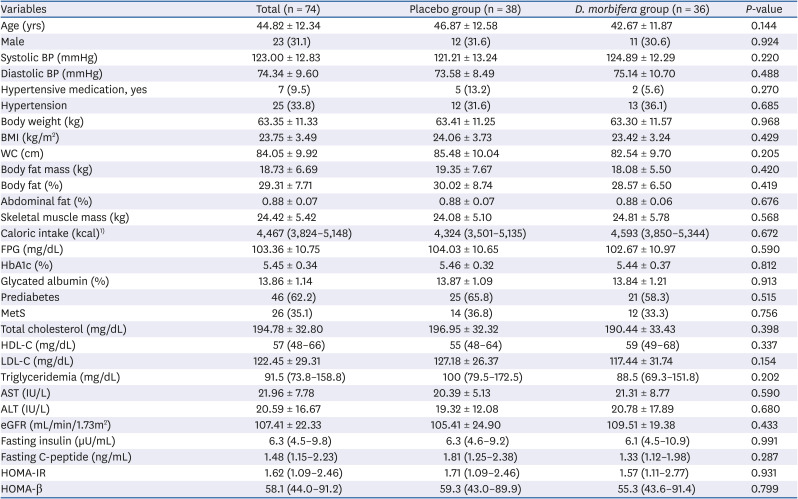
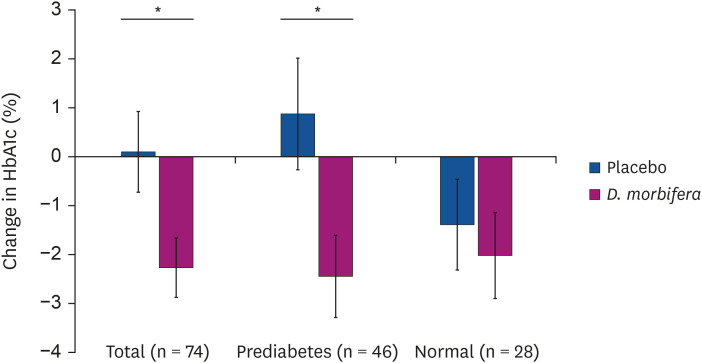
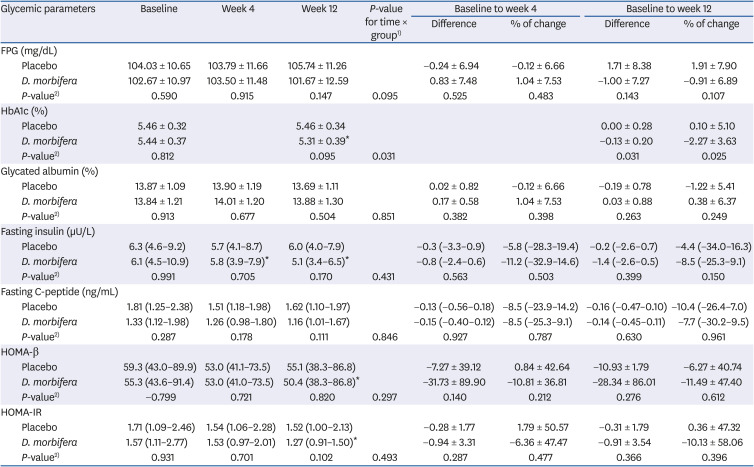
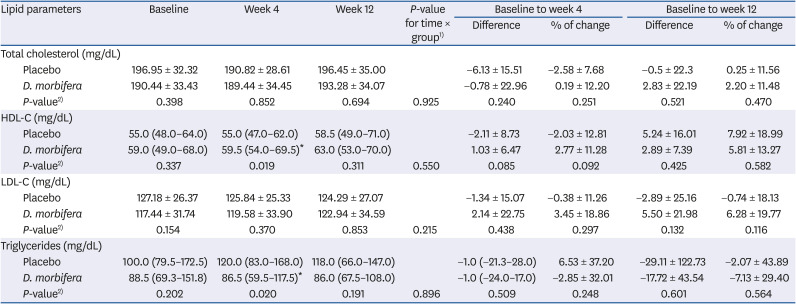


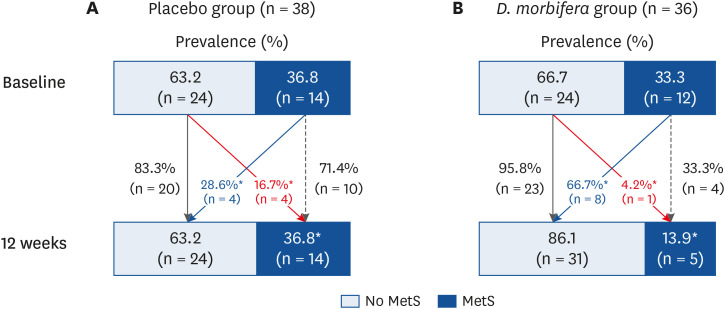




 PDF
PDF Citation
Citation Print
Print



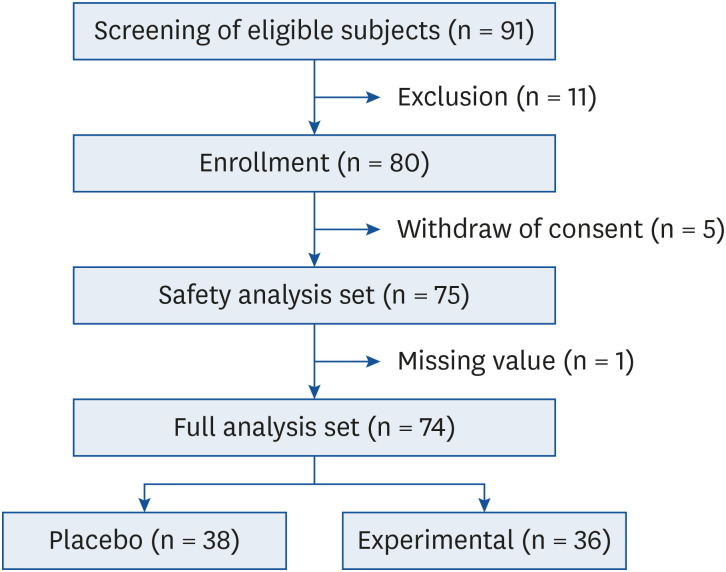
 XML Download
XML Download